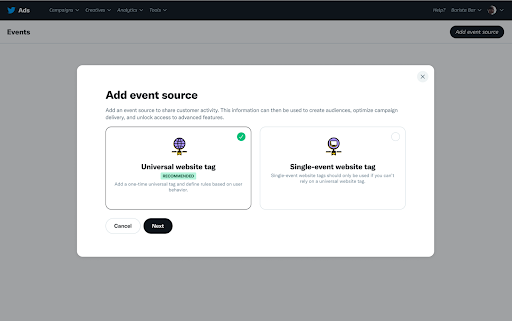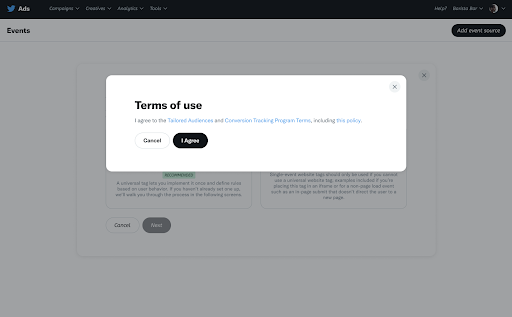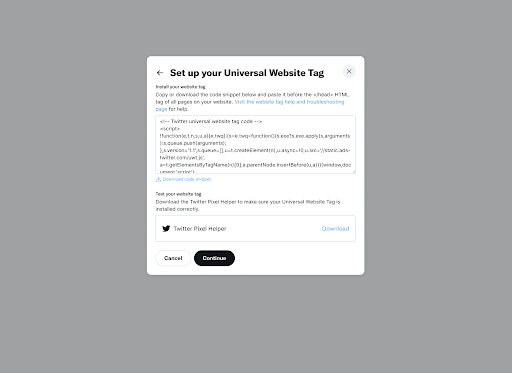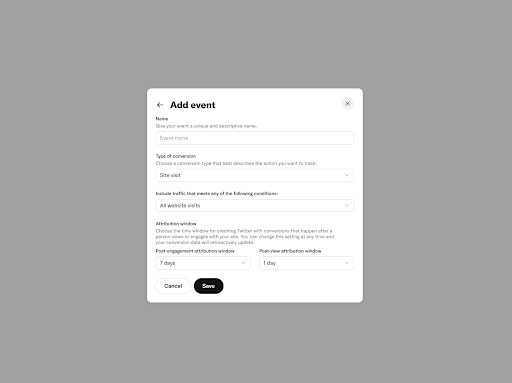How to Integrate a Twitter Pixel on Website
There are two types of website tags to choose from:
Universal website tag: a single html code snippet that can be placed across your entire website to track multiple site actions or conversions. We recommend using this website tag to track multiple actions in a consistent manner.
Single-event website tag: a unique snippet of code that can be used to track a single non landing page loading action, such as a subscribe button.
For most advertisers, we recommend using the Universal Website Tag, as it simplifies the tagging process and allows for tracking of a user’s journey across your entire website.
In rare cases, you may need a Single Event Tag to track a conversion for a non-page loading event (i.e. downloading a white paper or submitting a registration form).
Note: If your key KPI is Site Visits, we recommend using a JavaScript universal website tag to take advantage of the benefits of Click ID. Click ID is a unique identifier that is automatically appended in the URL to provide a reliable method to track site visits in a world without third-party cookies, and Twitter are planning to expand their conversion events in the future.

The Ad Manager or Power Editor on Facebook is where you can create a new pixel code or locate one you have already created.
Not seeing a Tools tab in your account? This is likely because a credit card hasn’t been added to your account.
Once your tag is placed on your site, it’s time to create your conversion event. That is, you’re ready to tell your tag what you want it to track. If you opted for a single-event tag, this is where you’ll create that as well.
The following page will appear if you have not set up your event source (e.g Universal Website Tag or Single Event Tag)


Agree to the terms of use
Paste this code snippet just before the closing HTML tag of your web page, or inside a container tag or tag management system. You may need a developer or technical resource to help you implement it.


Input the information you would like to track. For example, if you would like to track Site Visits you are able to select the “type of conversion” and the following URL rules.

If you’ve installed the pixel into your website, and your starting to notice tracking issues. You can contact us for more help or your Facebook’s Support team would best answer any questions about the integration.
Boost your sales and maintain a competitive edge by connecting to our system via API, and being one of the first to leverage our revolutionary solutions designed to transform your marketing efforts, and drive measurable results.



